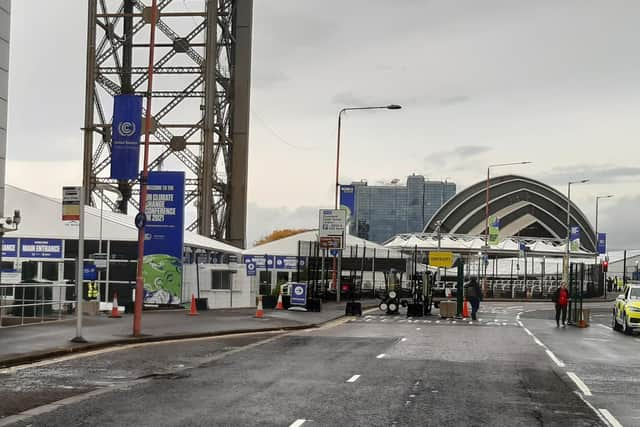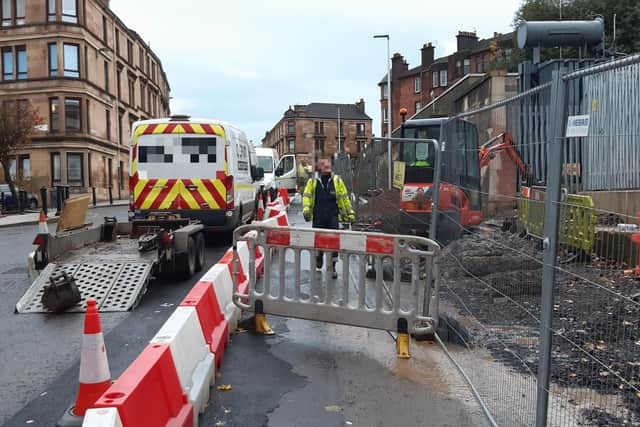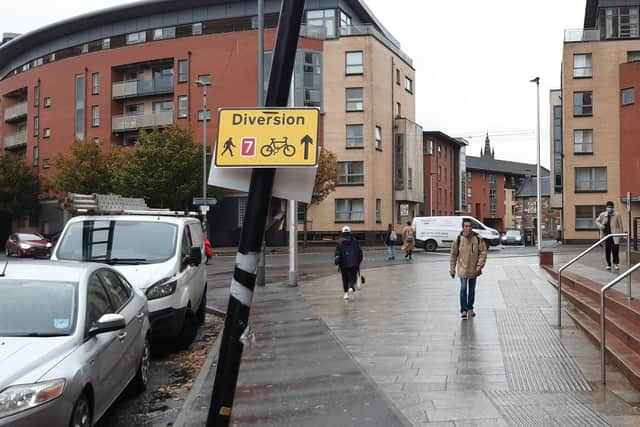COP26: Cycling to climate change summit? There’s nowhere to leave your bike – Alastair Dalton
However, nobody seems to have told the conference organisers, because they have provided no parking for bikes.
The surprising and pretty damning omission starkly illustrates the lip service with which those staging the United Nations summit have paid to cycling during the event.
Advertisement
Hide AdAdvertisement
Hide AdCycling appears to be viewed as little more than an irritation by the conference planners, underlined by the fact that any delegates wanting to maximise their sustainable travel credentials by riding to the summit will be left having to lock their bikes onto whatever railings or lamp posts they can find on the street outside the perimeter fence.
But it’s not just cycling delegates who have been ignored.
Thousands of riders value the national cycle route along the Clyde past the COP26 venue at the Scottish Event Campus (SEC) as a safe, traffic-free route in and out of the city.
But they will have become aware that sections have been progressively closed since last weekend, to be replaced by a bewildering and woefully sub-standard diversion route.
Should you try to follow it, as I have several times this week, you’d encounter missing direction signs at key junctions, contradictory signs on some sections and “Road Closed” signs on others.


Several signs even point in the wrong direction, while nearby COP26 security staff were clueless about the correct route.
On two stretches, including on busy Argyle Street, pedestrians and cyclists now have to share the pavement, already narrowed by cafe tables, leaving insufficient space for those coming in different directions to pass safely.
Brand new segregated cycle lanes on other sections of the diversion route, such as Old Dumbarton Road, are to be commended, but they still hadn’t been completed on Thursday – a week after the cycle route closures started.


They have been delayed by long-running work on a new electricity sub-station, where workers said they had not been told that Glasgow City Council had then decided to build the new lanes.
Advertisement
Hide AdAdvertisement
Hide AdI can imagine that all this will only lead to many cyclists riding on busier streets instead, where they would be at an increased safety risk of collisions with other traffic – as well as breathing in more fumes – or switch to more polluting forms of transport.
The official Get Ready Glasgow website stated the alternative cycle route was “to make sure your journey remains safe and convenient”.
If anyone had checked, they’d know that neither is true.


The Clydeside Expressway and other roads near the SEC have been closed for weeks around the summit.
But why haven’t other roads been closed – perhaps with limited local access for other vehicles – to maintain a safe route for cyclists?
The city council has bold ambitions to boost cycling rates with a network of new segregated routes.
Unfortunately, as the eyes of the world turn to Glasgow to see how COP26 will lead to a reduction in carbon emissions, it has demonstrated an embarrassing failure to put cycling at the heart of its transport preparations.
A message from the Editor:
Thank you for reading this article. We're more reliant on your support than ever as the shift in consumer habits brought about by coronavirus impacts our advertisers.
If you haven't already, please consider supporting our trusted, fact-checked journalism by taking out a digital subscription.
Comments
Want to join the conversation? Please or to comment on this article.
